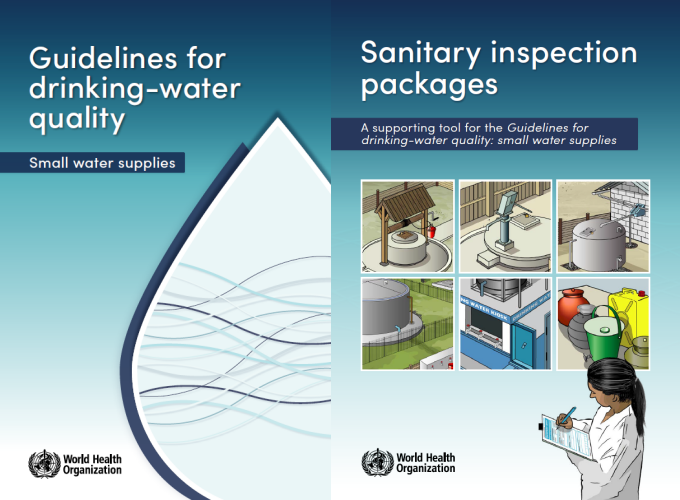WHO launches guidelines for drinking-water quality and sanitary inspection
Published on: 13/02/2024

Credit: WHO/2024
Note: Updated on 7 March 2024 to include information on the global launch of WHO Guidelines and associated tools.
A significant proportion of the global population, especially in rural areas, rely on small drinking-water supplies. These supplies are prone to water safety problems, which affect public health and livelihoods. This was the case in a village in Ethiopia, where people were shocked when a Water Safety Plan (WSP) team told them they had probably been drinking contaminated water ever since their pipeline had burst four years ago. Within a month after the awareness session, writes local facilitator Nebiyu Gashawbeza, the WSP team helped restore the water scheme and the community started drinking clean water.
Two new publications by the World Health Organization (WHO) provide guidance on how to address water safety issues: "Guidelines for drinking-water quality: small water supplies" [executive summaries are available in Arabic, English, French, Russian and Spanish] and the accompanying “Sanitary inspection packages” tool. For the first time, these Guidelines fully integrate the concept of water safety planning, with specific tailoring to a small supply context. They update and supersede WHO’s 1997 Guidelines for drinking-water quality. Volume 3: surveillance and control of community supplies. Participants at the All Systems Connect Symposium had a sneak preview of the new guidelines in May 2023.
The new guidelines are intended primarily for decision makers at national and subnational levels with responsibility for developing and implementing drinking-water quality regulatory frameworks and associated programmes for risk management and surveillance of small water supplies. This includes those supplies managed by households, communities and professional entities. The WHO guidelines provide a comprehensive overview of the health risks associated with drinking-water, the principles and approaches for ensuring its safety, and the practical steps to develop and implement water safety plans (WSPs). There is also guidance on assessing the enabling environment to inform planning and systems strengthening, and on improving the use of data on small water supplies.
WHO’s recommendations are supported by practical implementation considerations, including advice on progressive achievement, as well as 59 good-practice examples from countries and areas around the world. IRC provided two of these:
IRC’s Stef Smits was a member of the expert Working Group that guided the development of the WHO guidelines, including their core recommendations. Other IRC staff including Marieke Adank, John Butterworth, Jeremiah Atengdem, Lemessa Mekonta and Catarina Fonseca are among the nearly 200 contributors to the guidelines.
The accompanying WHO publication on Sanitary inspection packages provides sanitary inspection resources that can be used to support risk management and surveillance activities for 13 different types of small water supplies, listed below. These practical tools support sanitary inspections and associated management activities, including those carried out by health authorities, surveillance agencies and water suppliers.

Sanitary inspection packages. Credit: WHO, 2024. Sanitary inspection packages - a supporting tool for the Guidelines for drinking-water quality: small water supplies. P. 3
By following the guidance in the two new publications, WHO hopes that governments can better address small water supplies in policies, regulations and supporting programmes to improve drinking-water safety for the many who rely on these supplies.
Some 2276 people from 159 countries registered for the launch of the new WHO Guidelines and associated tools on 15 February. More than 1,000 people participated in the online global launch event. So far nearly 10,000 copies of the guidelines have been downloaded. See also the Questions and Answers file from the global webinar and Global webinar slides in Arabic, English, French, Portuguese, Russian and Spanish.
WHO and partners are planning a number of follow-up activities to the launch, including webinars on specific aspects of the Guidelines and Sanitary inspection packages.
Below is the recording of the launch webinar.